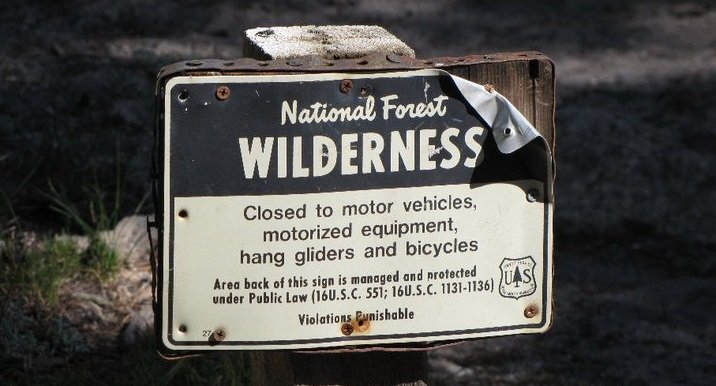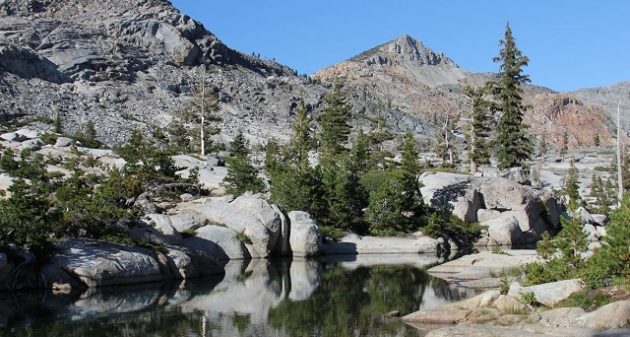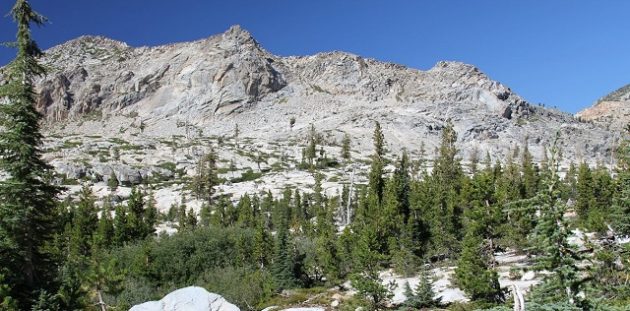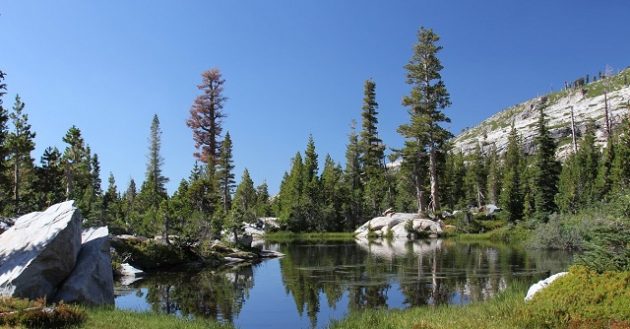
Birders who venture off the beaten path may run across a sign like the one above. But what is “wilderness” and how does it differ from any other federal land?
The short answer is that wilderness areas are part of the National Wilderness Preservation System and they are protected by the Wilderness Act of 1964. Simply put, wilderness areas are the most protected public lands in America. Roads, vehicles, structures, and commercial activities are prohibited. The longer answer is below.
The Wilderness Act (16 U.S.C. § 1131) has majestic language for a federal statute. It states as its purpose:
In order to assure that an increasing population, accompanied by expanding settlement and growing mechanization, does not occupy and modify all areas within the United States and its possessions, leaving no lands designated for preservation and protection in their natural condition, it is hereby declared to be the policy of the Congress to secure for the American people of present and future generations the benefits of an enduring resource of wilderness. For this purpose there is hereby established a National Wilderness Preservation System to be composed of federally owned areas designated by Congress as “wilderness areas”, and these shall be administered for the use and enjoyment of the American people in such manner as will leave them unimpaired for future use and enjoyment as wilderness, and so as to provide for the protection of these areas, the preservation of their wilderness character, and for the gathering and dissemination of information regarding their use and enjoyment as wilderness…
The definition of “wilderness” is similarly lofty:
A wilderness, in contrast with those areas where man and his own works dominate the landscape, is hereby recognized as an area where the earth and its community of life are untrammeled by man, where man himself is a visitor who does not remain. An area of wilderness is further defined to mean in this Act an area of undeveloped Federal land retaining its primeval character and influence, without permanent improvements or human habitation, which is protected and managed so as to preserve its natural conditions…

The Wilderness Act broadly prohibits commercial activities, motorized uses, and roads, structures, and facilities. Thus, it prohibits cars, trucks, off-road vehicles, bicycles, and motorboats, except in emergencies. And it prohibits human infrastructure, e.g., roads, buildings, dams, and pipelines, etc. (However, there are some exceptions for all of these restrictions.) The Act states:
Except as specifically provided for in this Act, and subject to existing private rights, there shall be no commercial enterprise and no permanent road within any wilderness area designated by this Act and, except as necessary to meet minimum requirements for the administration of the area for the purpose of this Act (including measures required in emergencies involving the health and safety of persons within the area), there shall be no temporary road, no use of motor vehicles, motorized equipment or motorboats, no landing of aircraft, no other form of mechanical transport, and no structure or installation within any such area.
The National Wilderness Preservation System now includes more than 800 congressionally designated wilderness areas totaling more than 110 million acres in 44 states and Puerto Rico. The most recent additions were approximately 1.3 million acres designated by the bipartisan John D. Dingell Jr. Conservation, Management, and Recreation Act in 2019.

The bulk of wilderness is in Alaska (more than 57 million acres), most of it designated by the Alaska National Interest Lands Conservation Act (ANILCA) in 1980. At more than 15 million acres, California is the only other state with more than 5 million acres of wilderness.
Wilderness areas are managed by one of four federal agencies: the Forest Service (FS); the National Park Service (NPS); the Fish and Wildlife Service (FWS); and the Bureau of Land Management (BLM). NPS manages the most acres, while FS manages the most units, and regulations vary among the agencies. For example, hunting is not permitted in most NPS wilderness areas, but it is often allowed in wilderness areas managed by the other agencies.
There is also a research institute dedicated to wilderness: the Aldo Leopold Wilderness Research Institute is an interagency facility located at the University of Montana. It is the only federal research group dedicated to studies needed to manage the National Wilderness Preservation System.
Like federal public lands generally, wilderness areas are not free from controversy. There are access issues for people with disabilities and the prohibition on roads and infrastructure precludes some wildlife and land management (including to address climate change) that may be beneficial. And some object to various restrictions, such as those that preclude mountain biking and commercial activities.
Of course, as places that are largely “untrammeled by man,” wilderness areas also have birds (591 species according to one study) for birders willing to leave roads and infrastructure behind. But the true reward will be some of America’s most remote, spectacular, and pristine natural areas.

The photos are from Desolation Wilderness in the El Dorado National Forest in California.













Leave a Comment